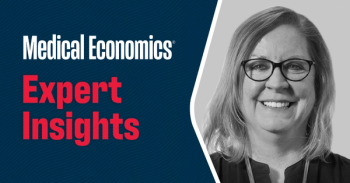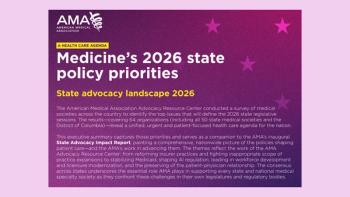
Why primary care is in crisis-and how to fix it
Fewer medical students are interested in primary care. Why?
A
Of 8,116 primary care post graduate training positions, only 42 percent were filled by graduates of U.S. medical schools. Osteopathic graduates (DOs) and foreign medical school graduates (FMGs) made up most of the remainder.
There is nothing negative about DOs and FMGs being primary care physicians (PCPs); the question is why don’t more U.S medical school graduates enter primary care? This issue is critical because the American Association of Medical Colleges (AAMC) projects that
Knight suggests a few reasons for the declining interest:
- Specialists typically earn twice as much as PCPs (although the median PCP income of $223,000 is not trivial.)
- Many medical schools overtly or covertly encourage graduates to pursue specialties.
- PCPs must spend an inordinate amount of time completing the electronic health record (EHR) and other insurer-required paperwork.
- 76 percent of medical students graduate with debt. According to the AAMC, the median debt in 2018 was $200,000.
Missing the point
Knight’s article was well researched, written and thoughtful, but like so many, she missed the most important point. Medical students are smart. They look around and realize that for less money, they get more responsibility and longer hours. And they have to earn that money by seeing far too many patients per day-24-30 patients, with an average visit of only 15 minutes-less when actual face time is considered.
With less time, students realize that they will not be able to practice comprehensive medicine as they are trained and desire to do. They realize that complicated issues that can’t be solved in a just a few minutes will need to be passed on to a specialist, substantially raising total healthcare costs. They also realize that they will not have the time to develop a close, trusting relationship with their patients and hence lose the potential for trust and true healing.
With the added burdens placed on them by insurers that further dilute time with patients, the end result is a simple decision-choose another career path even if primary care would otherwise be their preference.
Underestimating the value of primary care
There is an insidious misunderstanding of primary care. Most people, including all too many physicians and medical school faculty, think of primary care as treating only the “simple stuff.” That explains in part why they are prone to tell aspiring medical students that they are “too good for primary care.”
In fact, the well-trained and experienced PCP can handle most of the complex chronic illnesses that currently beset the American population-diabetes, heart failure, obesity, hypertension, etc. These are the diseases that consume 75-85 percent of all healthcare dollars. They are also adept at addressing most of the mental health problems, including anxiety, which accompanies or drives a large percentage of medical visits. Of course, they know when it is appropriate to refer a patient for more specialized care.
Why is it necessary to see so many patients per day? Insurers reimburse PCPs at low rates and do not appreciate the value of involved history taking, thorough examinations and the time spent learning and thinking. Insurers have also burdened the PCP with innumerable new requirements that add to the burden of ‘feeding’ the EHR and that further take time away from patients. Billing and coding have driven up office costs dramatically.
The result is that PCPs need to see more and more patients per day to cover their costs and maintain their incomes. Frankly, it is a non-sustainable business model. The result is that many PCPs are retiring early, others are selling their practices and working for the local hospital, while others are just keeping their heads down and getting burned out; over 50 percent have some objective
For those patients whose PCP follows the 24 -30 patients per day model, the result is less comprehensive care, more referrals to specialists, inadequate coordination of care, more tests, more ER visits and far less satisfaction.
Fixing the crisis
There are a number of possible approaches to solve this crisis in primary care. One is for a physician to reduce his or her practice size from the usual 2,500-3,000 patients to 400-800 patients, depending on the demographics of the patient population (practices with more seniors can see fewer total patients). The physician or nurse practitioner offers same-day and next-day appointments that are as long as necessary, plus prompt access by email and cell phone. Patients receive a comprehensive annual evaluation along with special attention to wellness and prevention.
Several different models use similar fundamentals:
- Direct primary care (DPC), an approach that is usually the least expensive but entails seeing more patients
- Membership-based
- Retainer-based
- Concierge medicine (which is more expensive but physicians have fewer patients in their practice)
In most of these models, rather than accepting insurance, PCPs typically charge patients an annual or monthly fee that covers some or all services. DPC allows adequate time per patient, better attention to chronic illnesses, coordination of care when a specialist is needed, 24/7 access, and, most importantly, the opportunity to develop real trust. The result is significantly improved quality of care.
Add to that greater patient satisfaction and less physician burnout. Not bad. And it lowers the total cost of care because it reduces specialist referrals, tests, imaging and ER visits, and often lowers hospitalizations. Said differently, the higher cost of these forms of primary care is more than offset by lower use of more costly care.
When students see that a DPC type of practice allows them to give excellent care, create deep interpersonal trust and have a real impact on people's lives, have a decent home life and still get paid a good income, far more of them will choose primary care.
Stephen C. Schimpff, MD, MACP, is a quasi-retired internist, professor of medicine and public policy, former CEO of the University of Maryland Medical Center, senior advisor to Sage Growth Partners and author of Fixing the Primary Care Crisis and Longevity Decoded – The 7 Keys to Healthy Aging
Newsletter
Stay informed and empowered with Medical Economics enewsletter, delivering expert insights, financial strategies, practice management tips and technology trends — tailored for today’s physicians.








